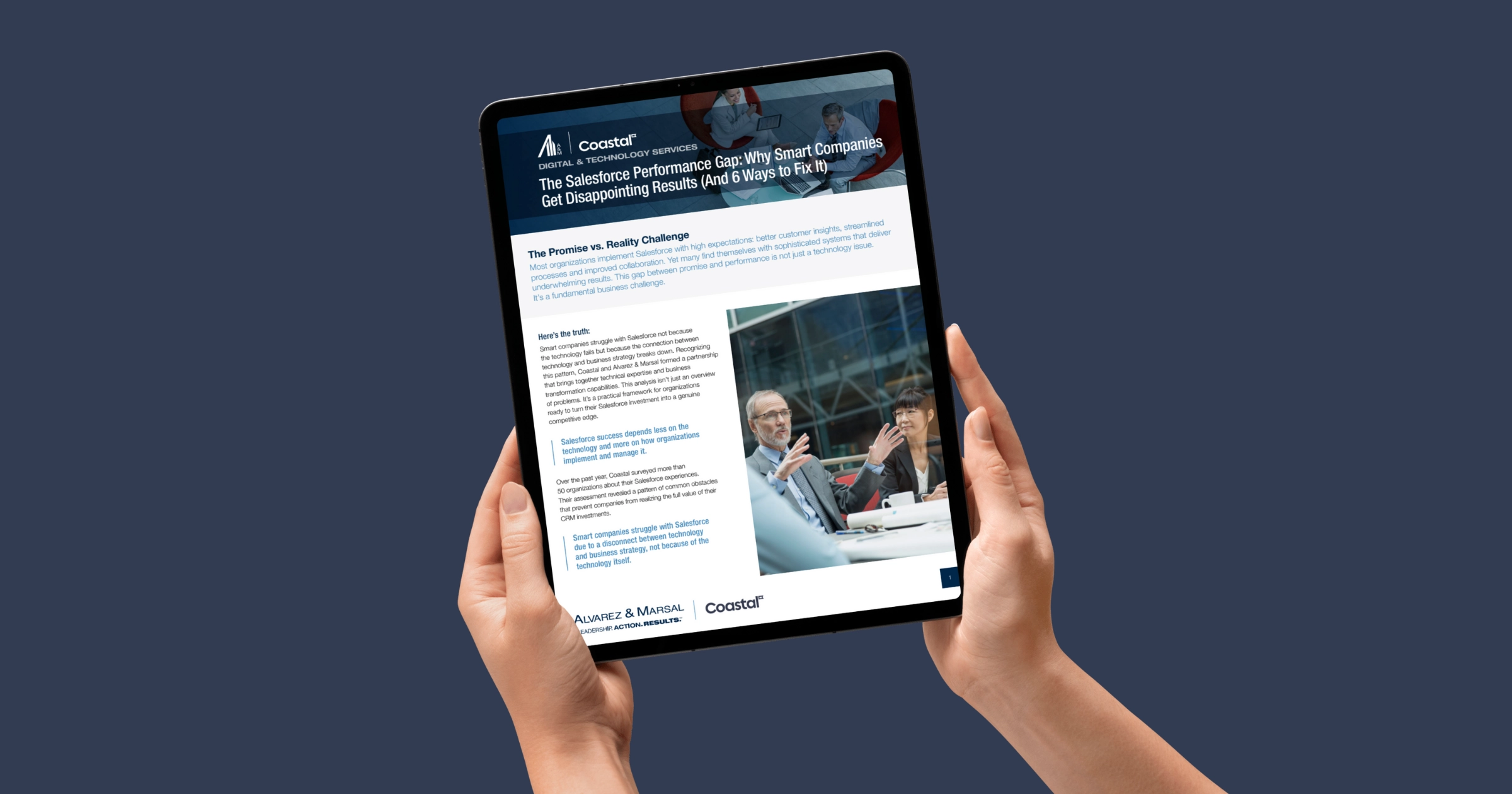Most Salesforce orgs start off strong. The platform launches, teams engage, progress gets made.
But over time, direction fades. The system grows—without growing smarter.
One team adds fields. Another builds automations. A third buys a new cloud. Everyone’s solving problems, but no one’s steering the platform.
Soon, your org reflects workarounds and backlog requests, not how your business actually runs.
Salesforce doesn’t fall apart all at once. It just stops adding value—and starts adding weight.
What We Found
Coastal and Alvarez & Marsal surveyed more than 50 Salesforce customers across industries. The common thread? Performance issues had little to do with tech and everything to do with structure.
We heard the same themes again and again:
- Teams lose trust in the data
- Adoption fades after go-live
- Growth adds friction instead of clarity
- Leaders struggle to see ROI
The platform works, but it’s underdelivering.
5 Signs You’re Managing Salesforce—Not Maximizing It
You don’t need a full rebuild. But if any of these sound familiar, it’s time to reassess.
1. Disconnected Builds
Sales automates. Marketing adds fields. Support launches a new workflow. Each change solves a problem, but the system starts to feel cobbled together, with no shared logic.
2. Temporary Fixes Become Long-Term Problems
A last-minute workaround hits the deadline. Six months later, it’s breaking reporting—and no one remembers why it was added in the first place.
3. Admins Stay in Reactive Mode
Internal teams are stuck firefighting. They’re too busy fixing tickets to build for what’s next.
4. Nobody Owns the Data
Every team has its own version of the truth. Definitions shift, duplicates grow, and data quality slips. Confidence in reporting fades, and data-driven decisions disappear.
5. Slipping Adoption
Users log in—but they don’t rely on the system. That’s not a training problem. It’s a trust gap.
What High Performers Do Differently
Teams that get real business value from Salesforce stay aligned on purpose and structure, not just features.
- Platform changes follow strategy, not ticket queues.
- Governance is clear, so decisions don’t get made in silos.
- Design is intuitive, so users don’t opt out.
- Data is owned, so reports drive action.
- Impact is measured, so CRM becomes a growth engine, not just a task tracker.
This calls for a different strategic approach: managing Salesforce like the operational backbone it is.
In Practice: How Teams Are Fixing It
When teams shift from patching to planning, performance rebounds.
A healthcare system buried in manual reporting rebuilt its data model—and cut admin time in half.
A SaaS provider restructured its sales process to align with how reps actually sell, resulting in a 22% increase in lead conversion.
They cleaned up the foundation instead of piling on more features.
Get the Report
We created the Salesforce Performance Gap Report to help teams reset, realign, and get results—without starting from scratch.
Inside, you’ll find:
- 5 common platform breakdowns (and how to spot them)
- A 6-part framework for restoring performance
- Real-world examples from teams who fixed what’s slowing them down
Plus: a checklist to spot hidden complexity and prioritize what to fix first.



